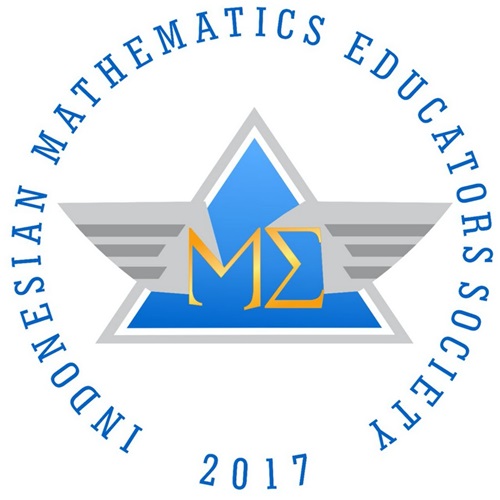Student's Critical Thinking Skill on Online Inquiry Learning and Problem Based Learning (PBL)
DOI:
https://doi.org/10.22437/edumatica.v11i01.11458Keywords:
critical thinking skills, inquiry, online learning, PBL, students' initial abilitiesAbstract
This research was motivated by teachers who must continue to help their students to enhancestudent's critical thinking skills even in COVID-19 pandemic situation. Online Inquiry and Problem Based Learning (PBL) with Zoom Cloud Meeting platform was used because based on previous research, Inquiry learning and PBL can improve student's critical thinking skills. The purpose of this study was to see the differences of junior high school student's critical thinking skills after being taught by online Inquiry learning and PBL in terms of student's initial abilities and to see the interaction between Inquiry, PBL, and initial ability with student's critical thinking. This research was used quasi experimental nonequivalent control group design, conducted in 8th grade of Junior High School 7 Jambi City using 3 classes; 2 experimental classes and 1 control class selected by the simple random sampling method. The results of this study were tested with one way and two way ANOVA, showing that there were differences of student's critical thinking abilities with high, medium and low initial abilities after being taught by online Inquiry learning and PBL learning, but there was no interaction between online Inquiry learning and PBL, and student's initial ability with student's critical thinking.
Downloads
References
Adams, M., & Bruce, B. C. (1980). * Center for the Study of Reading IL. (13).
Andrini, V. S. (2016). The Effectiveness of Inquiry Learning Method to Enhance Students' Learning Outcome: A Theoritical and Empirical Review. Journal of Education and Practice, 7(3), 38-42. Retrieved from https://www.semanticscholar.org/paper/The-Effectiveness-of-Inquiry-Learning-Method-to-A-Andrini/4684fdf5cf3317542b618fa20e37e39f566fb2dd
Argaw, A. S., Haile, B. B., Ayalew, B. T., & Kuma, S. G. (2017). The Effect of Problem Based Learning (PBL) Instruction on Students' Motivation and Problem Solving Skills of Physics. Eurasia Journal of Mathematics, Science, and Technology Education, 13(3), 857-871. https://doi.org/10.12973/eurasia.2017.00647a
Argina, A. W., Mitra, D., Ijabah, N., & Setiawan, R. (2017). Indonesia PISA Result: What Factors and What Should be Fixed? ELIC, 69-79. Retrieved from http://jurnal.unissula.ac.id/index.php/ELIC
Arviana, R., Irwan, & Dewi, M. P. (2018). Problem Based Learning in Mathematics Education and Its Effect on Student's Problem Based Learning in Mathematics Education and Its Effect on Student's Critical Thinking. American Scientific Publishers, 24. https://doi.org/10.1166/asl.2018.11962
Creswell. (2012). Educational Research. Boston: Pearson Education Inc.
Crimbricz, S., Stoll, D., & Wilkens, C. (2015). Developing Mathematical Thinking in the 21st Century. NYSUT's Journal of Best Practices in Education, 8. Retrieved from https://www.nysut.org/~/media/files/nysut/resources/2015/april/edvoiceviii_final.pdf?la=en
Diani, I. A., Rahayu, S., & Verawati, N. N. S. P. (2019). Pengaruh Model Pembelajaran Berbasis Masalah dan Pengetahuan Awal Terhadap Kemampuan Berpikir Kritis Fisika Peserta Didik Kelas X. Konstan: Jurnal Fisika dan Pendidikan Fisika, 4(1), 287. Retrieved from http://jurnalkonstan.ac.id/index.php/jurnal
Ennis, R. (1991). Critical Thinking: A Streamlined Conception. Teaching Philosophy, 14(1). Retrieved from https://education.illinois.edu/docs/default-source/faculty-documents/robert-ennis/ennisstreamlinedconception_002.pdf
Facione, P. A. (2011). Critical Thinking : What It Is and Why It Counts. Insight Assessment, 1-28. Retrieved from https://www.insightassessment.com/CT-Resources/Teaching-For-and-About-Critical-Thinking/Critical-Thinking-What-It-Is-and-Why-It-Counts/Critical-Thinking-What-It-Is-and-Why-It-Counts-PDF
Fraser, B., Garcia, T., & Pintrinch, P. R. (1992). Critical Thinking and Its Relationship to Motivation, Learning Strategies, and Classroom Experience. Contennial Annual Convention of the American Psychological Association, (1978), 1-19. Retrieved from http://www.pearweb.org/atis/documents/4/download
Fuad, N. M., Zubaidah, S., Mahanal, S., & Suarsini, E. (2017). Improving Junior High Schools' Critical Thinking Skills Based on Test Three Different Models of Learning. International Journal of Instruction, 10(1), 101-116. https://doi.org/10.12973/iji.2017.1017a
Gholami, M., Moghadam, P. K., Mohammadipoor, F., Tarahi, M. J., Sak, M., Toulabi, T., & Pour, A. H. H. (2016). Comparing the Effects of Problem-Based Learning and the Traditional Lecture Method on Critical Thinking Skills and Metacognitive Awareness in Nursing Students in a Critical Care Nursing Course. Nurse Education Today, 45, 16-21. https://doi.org/10.1016/j.nedt.2016.06.007
Gumilar, Sunarya, & Arifin. (2017). Developing Chemistry Teacher's Ability to Design Inquiry-based Lab through Scaffolding type of Teacher Training Program. Journal of Physics: Conference Series, 812. https://doi.org/10.1088/1742-6596/755/1/011001
Hmelo, C. E., & Silver. (2004). Problem-Based Learning: What and How Do Students Learn? Educational Psychology, 51(1), 31-39. https://doi.org/10.1023/B
Jacob, S. M. (2012). Mathematical Achievement and Critical Thinking Skills in Asynchronous Discussion Forums. Procedia - Social and Behavioral Sciences, 31, 800-804. https://doi.org/10.1016/j.sbspro.2011.12.144
Pedaste, M., Maeots, M., Siiman, L. A., de Jong, T., van Riesen, S. A. N., Kamp, E. T., … Tsourlidaki, E. (2015). Phases of Inquiry-Based Learning: Definitions and the Inquiry Cycle. Educational Research Review, 14(March), 47-61. https://doi.org/10.1016/j.edurev.2015.02.003
Seventika, S. Y., Sukestiyarno, Y. L., & Mariani, S. (2018). Critical Thinking Analysis Based on Facione (2015) - Angelo (1995) Logical Mathematics Material of Vocational High School (VHS). Journal of Physics: Conference Series, 983(1). https://doi.org/10.1088/1742-6596/983/1/012067
Suryanti, Arifin, I. S. Z., & Baginda, U. (2018). The Application of Inquiry Learning to Train Critical Thinking Skills on Light Material of Primary School Students. Journal of Physics: Conference Series, 1108(1). https://doi.org/10.1088/1742-6596/1108/1/012128
Topolovcan, T., & Matijevic, M. (2017). Critical Thinking as a Dimension of Constructivist Learning : Some of the Characteristics of Students of Lower Secondary Education in Croatia. Center for Educational Policy Studies Journal, 7(3), 47-66. Retrieved from https://eric.ed.gov/?id=EJ1156913
Trilling, B., & Fadel, C. (2009). 21st Century Skills. Retrieved from http://ardian.id/wp-content/uploads/2018/10/21st_Century_Skills_Learning_for_Life_in_Our_Times____2009-3.pdf
Widyatiningtyas, R., Kusumah, Y. S., Sumarmo, U., & Sabandar, J. (2015). The impact of problem-based learning approach tosenior high school students' mathematics critical thinking ability. Journal on Mathematics Education, 6(2), 30-38. https://doi.org/10.22342/jme.6.2.2165.107-116
Zoom Video Communications Inc. (2016). Security guide: Zoom Video Communications Inc. Retrieved from Zoom Video Communications Inc. website: https://zoom.us/docs/doc/Zoom-Security-White-Paper.pdf
Downloads
Published
How to Cite
Issue
Section
License
Copyright (c) 2021 Febby Ayuni Esya Putri, Syaiful Syaiful, Jodion Siburian

This work is licensed under a Creative Commons Attribution-NonCommercial-ShareAlike 4.0 International License.







